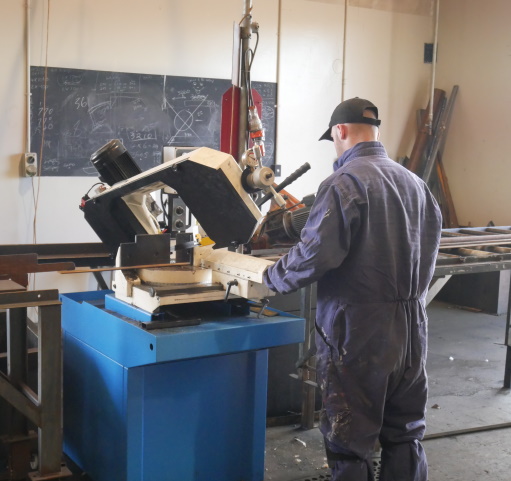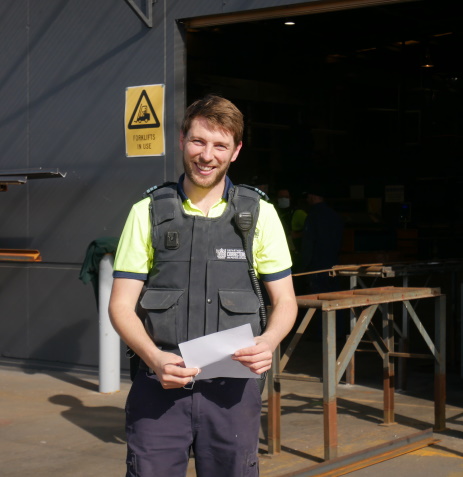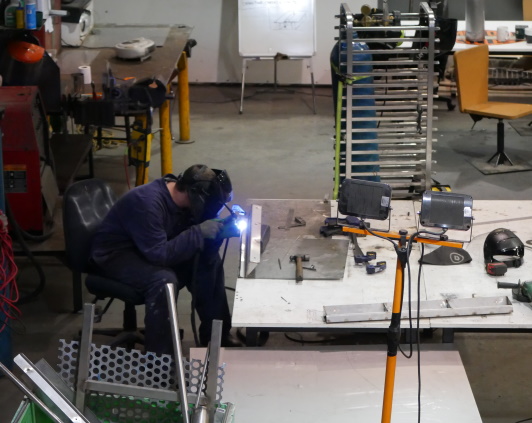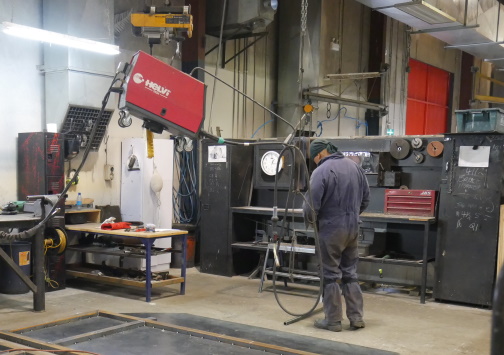31 May 2022
Strengthening our engineering pathway to employment

Employment in Engineering is that much closer for men learning the trade at Christchurch Men’s Prison.
Principal Instructor Joe Sheasby says for the past 18 months Engineering at CMP has been developing a unique Engineering pathway where men gain the skills and qualifications to fabricate, weld and manage projects.
The pathway begins when the men are early into their sentence and runs through to the latter stages, as they near release. They can see their projects all the way through to installation, either on site, outside the wire or off site, and may also experience Release to Work employment in the community.
“We are training and qualifying men for employment in industries that are crying out for good qualified workers,” says Joe. “Our men are gaining real world skills. We have expanded the qualifications we support, to give the men more transferable skills across the board - in engineering or in another trade. We also now have an Outside the Wire (OTW) Engineering workshop at CMP and our learning and experiences are as close to the real world experience as possible.”
It’s early days, but Joe says that already they have 16 men in the new pathway and others who transferred from other regions specifically to be involved.

Principal Instructor Joe Sheasby
Engineering training at Christchurch Men’s Prison is well recognised for the quality and bespoke projects.
Recently these have included projects as diverse as building kennel units for Husky Rescue, and designing and building windows and doors for prisons throughout the country. One of the Engineering teams’ current projects is the design and build of a room divider for Rawhiti, the new Canterbury Community Corrections site in East Christchurch.
The design, fabrication, weld and build of this has been overseen and supported by Engineering Instructor Russell Hawes.
Russell says the divider for Rawhiti will be manufactured in the Engineering workshop and, all going well, our staff will install this onsite alongside two of the men involved in its build.
“This has successfully happened already on the Husky project,” he says, “and we are delighted to have another opportunity. It makes an enormous difference for the men who get to see their project through to completion and delivery to the happy client. Opportunities like this highlight the collaborative nature and real-life experience offered through the pathway and will hopefully become a consistent occurrence as we continue the development of our men within the Engineering pathway.”
Joe says new qualifications supporting the pathway have been well received by the men. Recently the Engineering team gathered with the 14 men on the pathway to celebrate their achievements with nine men achieving their Pre-Trade Certificate and five men also achieving their NZ Certificate in Manufacturing. The remaining men are enrolled in either of these courses and underway with their training.


